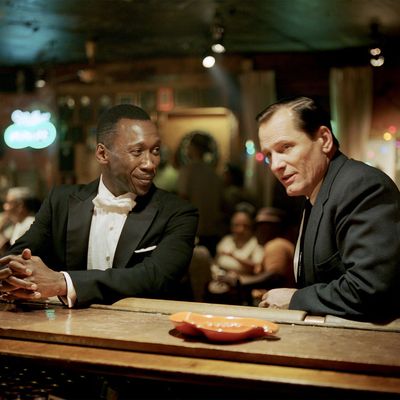
I like to imagine that, hidden somewhere in the depths of its new museum, the Academy of Motion Picture Arts and Sciences has a gigantic dial that it is continually adjusting to find the policies that will create the least public outcry — a doomed endeavor, since no matter the course it charts, our hyperpolarized atmosphere ensures the Academy will be scorned as full of both out-of-touch gatekeepers and thought-policing totalitarians in equal measure. And yet, like Sisyphus, it keeps trying anyway. You have to respect that.
This week’s Oscars controversy was the reveal of the Academy’s long-promised diversity and inclusion standards, first announced back in the hothouse environment of June, when every elite institution was trying to get ahead of the summer’s racial reckoning. Starting with the 96th Oscars in 2024, movies hoping to be nominated in Best Picture will need to jump through two of the following four hoops: (1) The film must feature underrepresented groups, either in substantial roles, the overall ensemble, or in its narrative themes; (2) a certain number of key crew members must be female and/or queer, nonwhite, or disabled; (3) the film’s distributor must employ apprentices or paid interns from underrepresented groups; and (4) the company must have female, queer, nonwhite, and/or disabled executives in its marketing, publicity, or distribution teams. (For the two years prior to the 2024 awards, putative Best Picture nominees must also submit how many of the standards they meet, but won’t be disqualified if they don’t hit the benchmark.) The full text of the standards is below:
Besides the somewhat predictable fearmongering about “woketopians,” the Academy’s announcement sparked a social-media parlor game, with Awards Twitter trying to figure out which recent Best Picture nominees would miss the cut under the new rules. As far as I can tell, the standards are loose enough that there aren’t any. The Irishman? Thanks in part to Mexican cinematographer Rodrigo Prieto, it would be safe. The Lord of the Rings trilogy? Two of the screenwriters, Fran Walsh and Philippa Boyens, are women. What about a war movie like 1917? That was co-written by one woman, Krysty Wilson-Cairns, and produced by another, Pippa Harris. Given the prevalence of female casting directors and costume designers in Hollywood, as well as the sheer number of interns, I suspect it would take more effort for a modern Oscars contender to fail these standards than to pass them, especially those released by large distributors. (How the new rules will affect tiny art-house studios is the one qualm that I do share.) Indeed, the Academy’s rules are modeled after the BAFTAs, whose D&I guidelines did not prevent them from having their own #OscarsSoWhite controversy earlier this year.
Which speaks to the strange logic of the initiative: The Academy is both heralding a step forward for greater representation, while also reassuring worrywarts that nothing substantial will change. So, what’s the point of all this?
I can think of a few things. First, there’s value in codifying standards everyone already abides by. A norm can be easily thrown aside; a rule can’t. Enshrining these benchmarks in the Academy rule book also ensures that workplace diversity continues to be front of mind during awards season, something as important to the movies’ multimillion-dollar awards carnival as release dates and screener access.
But more important, it’s a sign that the Academy is increasingly comfortable stepping into the role outsiders have long assigned it: Hollywood’s official ambassador to the outside world. If it’s going to be held publicly responsible for the industry’s problems — something its employees have long grumbled about in private — this is the Academy stepping into that responsibility and, for the first time, dictating terms of its own. It’s an interesting, and slightly surprising, power shift. But not an unwelcome one.


